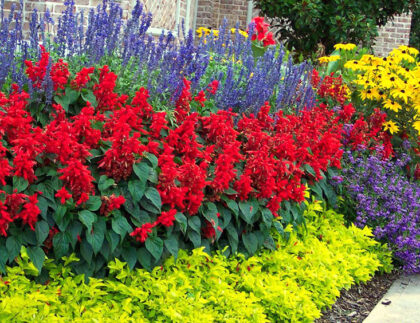Annual & Perennial Accents

- Before you get in your car to go plant shopping, evaluate the areas in your garden where you want annuals. Measure the size of the spaces, know the sun and shade patterns throughout the day, think about how the areas will be viewed and take stock of what plants are nearby.
- In a bed of strictly annuals — unless you're buying a mix of plants that is intended to go together, as with some pansies — stick to larger quantities of a few types of plants, rather than the over-busy look of a few of everything.
- Not all plants need to have flowers to be great additions to the garden. Foliage plants such as coleus, Persian shield, 'Magilla' perilla, Joseph's coat and copper leaf add color and texture whether used as filler or focal point.
- Color combinations can complement, contrast or match. Too much contrast can be jarring, and too much of the same color can be monotonous. Use several colors in a limited palette that work well together for a cohesive and pleasing look. Arrange samples on the ground at the garden center to see if they will work — chances are, if they look good together in a flat, they'll look good in the garden!
- Repeat colors and forms to lead the eye through the garden.
- Use a variety of textures to give the garden energy. Too many plants with either a fine or a bold texture can be boring to look at.
- If you're tucking annuals into a perennial bed, keep in mind the ultimate sizes of the annuals and the perennials so that none of the plants are later overwhelmed by their neighbors.

